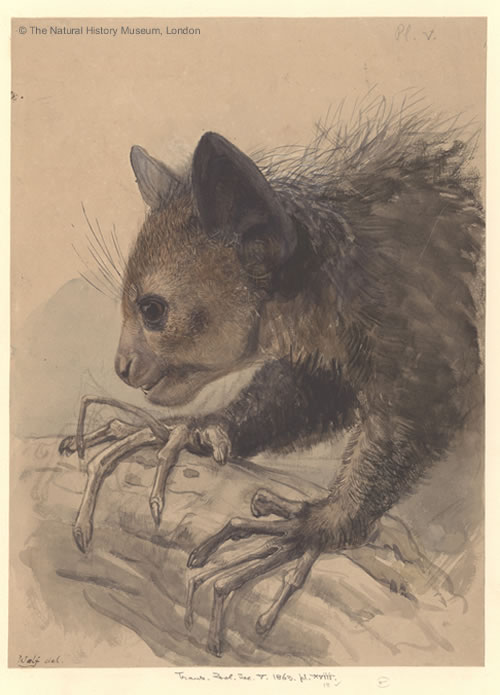Aye-aye (Daubentonia madagascariensis) illustration An Aye-aye foraging, c.1863, Joseph Wolf. Held at the Natural History Museum, London
The German-born artist, Joseph Wolf (1820-1899)
(An Aye-aye foraging), c.1863.
Watercolour and pencil, 342 x 352 mm.
License: public domain
URL: http://en.wikipedia.org/wiki/Image:Ayeaye%2C_Daubentonia_madagascariensis%2C_Joseph_Wolf.jpg
The Aye-aye (Daubentonia madagascariensis) is a strepsirrhine native to Madagascar that combines rodent-like teeth with a long, thin middle finger to fill the same ecological niche as a woodpecker. It is the world's largest nocturnal primate, and is characterized by its unique method of finding food; it taps on trees to find grubs, then gnaws holes in the wood and inserts its elongated middle finger to pull the grubs out.
The Aye-aye is the world's largest nocturnal primate, and dwells predominantly in forest canopies. It weighs about 2.5 kilograms, with the female weighing in slightly less (by an average of 100 grams) than males. Other than weight and sex organs, aye-ayes exhibit no sexual dimorphism of any kind. They all grow from 30-37 cm from head to body, with a 44-53 cm tail.
